by Derek Neal
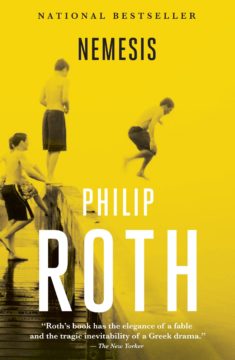 I recently read Philip Roth’s Nemesis, a novel that’s received renewed attention as it centers on a polio epidemic. This isn’t why I read it, although I’ll admit that reading about the slow build and then cascading avalanche of a virus, and the public’s nonchalance giving way to caution and then increased panic and hysteria, closely paralleled the events of early 2020. I suppose epidemics and our response to them always play out in a similar fashion. I picked the book off my shelf because I needed something to read—much like the setting of the novel, it’s summer vacation for me. My dad had given me the book some time before, and it had sat there, collecting dust on the shelf built into the low walls of my slope-ceilinged attic apartment. As a rule, I hate receiving books as gifts because I then feel an obligation to read them; instead, I prefer to choose and read a book in a more serendipitous fashion. It’s not something that can be forced. But if the giver of the book knows that their gift will go unread, possibly for years, but will then present itself to be read at the right moment, a book can be a great gift.
I recently read Philip Roth’s Nemesis, a novel that’s received renewed attention as it centers on a polio epidemic. This isn’t why I read it, although I’ll admit that reading about the slow build and then cascading avalanche of a virus, and the public’s nonchalance giving way to caution and then increased panic and hysteria, closely paralleled the events of early 2020. I suppose epidemics and our response to them always play out in a similar fashion. I picked the book off my shelf because I needed something to read—much like the setting of the novel, it’s summer vacation for me. My dad had given me the book some time before, and it had sat there, collecting dust on the shelf built into the low walls of my slope-ceilinged attic apartment. As a rule, I hate receiving books as gifts because I then feel an obligation to read them; instead, I prefer to choose and read a book in a more serendipitous fashion. It’s not something that can be forced. But if the giver of the book knows that their gift will go unread, possibly for years, but will then present itself to be read at the right moment, a book can be a great gift.
I took Nemesis to my family’s cottage, which sits at the end of an unpaved road and is situated steps from a small lake. A storm blew through and we promptly lost power. Not having TV, Wi-Fi, or many of the other distractions of modern life, I read Nemesis in a day or two and rediscovered the feeling of simultaneously racing through a book and trying to drag it out; when a novel is good—and Nemesis is a masterpiece in my estimation—the reading experience becomes so engrossing that it has to be artificially prolonged without losing the momentum of the story. Inevitably, this fails, you finish the book, and thankfully there are many more waiting for you. Read more »

 By the time I got to high school, the humanities were seen as a kind of side dish in the educational meal. This was largely due to the exigencies of the space race and an inclination on the part of American society to acquiesce to the suppression of critical thought in the post-war years. The main course from a geopolitical perspective was science and engineering.
By the time I got to high school, the humanities were seen as a kind of side dish in the educational meal. This was largely due to the exigencies of the space race and an inclination on the part of American society to acquiesce to the suppression of critical thought in the post-war years. The main course from a geopolitical perspective was science and engineering.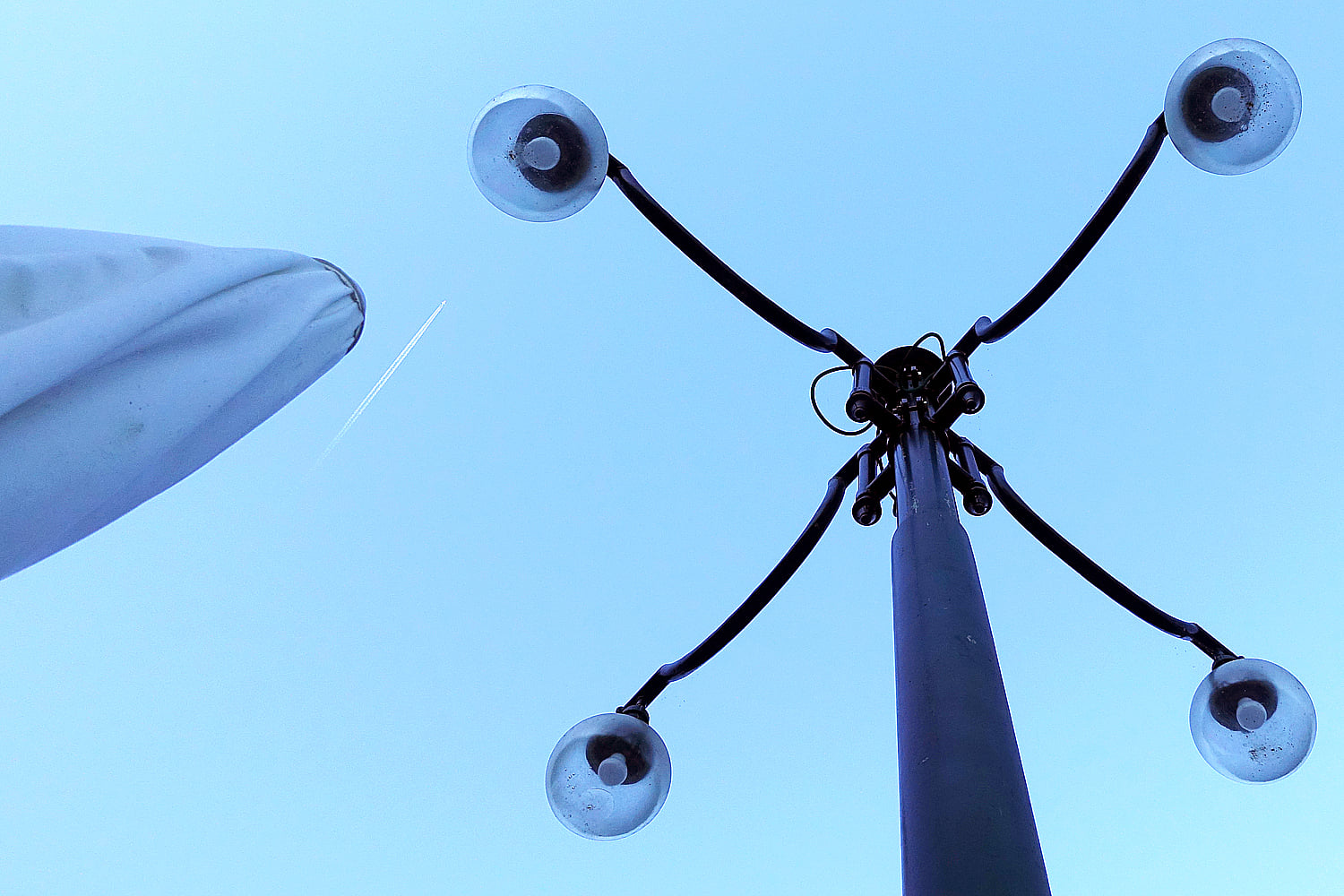
 Guns guns guns
Guns guns guns  Since 1990 I have also visited Vietnam a few times. Vietnamese economic reform (called doi moi) started in the mid-1980’s. On my first visit I found Hanoi to be more like a small quiet town in India, with a lot of poverty (and some begging in the streets, but not many visibly malnourished children), while Saigon or Ho Chi Minh City was somewhat better-off, and more raucous and colorful. One lecture I gave in Vietnam was titled “ The Rocky Road to Reform” where I spelled out the challenges of economic transition from a state-dominated economy; after my lecture a Vietnamese academic came to me and said, “Our roads are all full of potholes, so we are used to the ‘rocky road’ of challenges”!
Since 1990 I have also visited Vietnam a few times. Vietnamese economic reform (called doi moi) started in the mid-1980’s. On my first visit I found Hanoi to be more like a small quiet town in India, with a lot of poverty (and some begging in the streets, but not many visibly malnourished children), while Saigon or Ho Chi Minh City was somewhat better-off, and more raucous and colorful. One lecture I gave in Vietnam was titled “ The Rocky Road to Reform” where I spelled out the challenges of economic transition from a state-dominated economy; after my lecture a Vietnamese academic came to me and said, “Our roads are all full of potholes, so we are used to the ‘rocky road’ of challenges”! A chasm divides our view of human knowledge and human nature. According to the logic of the chasm, facts are the province of experimental science, while values are the domain of religion and art; the body (and brain) is the machinery studied by scientists, while the mind is a quasi-mystical reality to be understood by direct subjective experience; reason is the faculty that produces knowledge, while emotion generates art; STEM is one kind of education, and the liberal arts are wholly other.
A chasm divides our view of human knowledge and human nature. According to the logic of the chasm, facts are the province of experimental science, while values are the domain of religion and art; the body (and brain) is the machinery studied by scientists, while the mind is a quasi-mystical reality to be understood by direct subjective experience; reason is the faculty that produces knowledge, while emotion generates art; STEM is one kind of education, and the liberal arts are wholly other.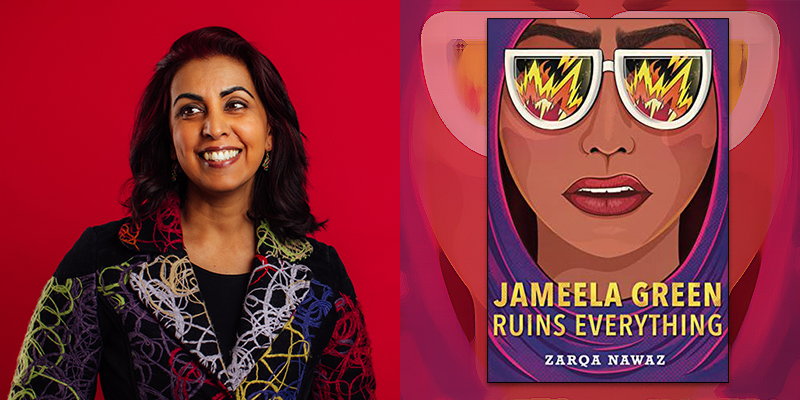 Zarqa Nawaz: When my memoir, Laughing All the Way to the Mosque, didn’t make it to the New York Times Best Seller list, I became a little cynical towards life. It was 2014 and ISIS had just emerged and was dominating the headlines. Muslims are forever fighting the PR war when it comes to their image. Political pundits were opining that radical Islamic jihadists were the norm in Muslim culture. I knew there was a deeper story behind ISIS, especially from the one the media was portraying. I started doing research and the novel began to emerge—a bitter writer, reeling from professional failure, gets embroiled in an ISIS like group and a series of unfortunate events ensue.
Zarqa Nawaz: When my memoir, Laughing All the Way to the Mosque, didn’t make it to the New York Times Best Seller list, I became a little cynical towards life. It was 2014 and ISIS had just emerged and was dominating the headlines. Muslims are forever fighting the PR war when it comes to their image. Political pundits were opining that radical Islamic jihadists were the norm in Muslim culture. I knew there was a deeper story behind ISIS, especially from the one the media was portraying. I started doing research and the novel began to emerge—a bitter writer, reeling from professional failure, gets embroiled in an ISIS like group and a series of unfortunate events ensue. A study looking at the economic lifetimes of 61 commercially used metals finds that more than half have a lifespan of less than 10 years. The research, published on 19 May in Nature Sustainability
A study looking at the economic lifetimes of 61 commercially used metals finds that more than half have a lifespan of less than 10 years. The research, published on 19 May in Nature Sustainability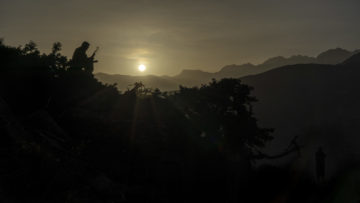 Depending on one’s pace, the season, and the ongoing state of war, it is a day’s hike from Andarab to the border of legendary Panjshir, the adjacent province in the highlands of Afghanistan. The two mountain districts, part of a five-hundred-mile-long stretch of the Hindu Kush extending from the Himalayas, are citadels that have rained doom on every bully ever to pass through Central Asia in endless dogged pursuit of cruelty and loot.
Depending on one’s pace, the season, and the ongoing state of war, it is a day’s hike from Andarab to the border of legendary Panjshir, the adjacent province in the highlands of Afghanistan. The two mountain districts, part of a five-hundred-mile-long stretch of the Hindu Kush extending from the Himalayas, are citadels that have rained doom on every bully ever to pass through Central Asia in endless dogged pursuit of cruelty and loot. May, a month we traditionally associate with spring, Mother’s Day, and graduations, was defined this year by a far different rite: funerals. In a single ten-day stretch, forty-four people were murdered in mass shootings throughout the country—a carnival of violence that confirmed, among other things, the political cowardice of a large portion of our elected leadership, the thin pretense of our moral credibility, and the sham of public displays of sympathy that translate into no actual changes in our laws, our culture, or our murderous propensities. In the two deadliest of these incidents, the oldest victim was an eighty-six-year-old grandmother, who was shot in a Tops supermarket in Buffalo, New York; the youngest were nine-year-old fourth-grade students, who died in connected classrooms at Robb Elementary School, in Uvalde, Texas.
May, a month we traditionally associate with spring, Mother’s Day, and graduations, was defined this year by a far different rite: funerals. In a single ten-day stretch, forty-four people were murdered in mass shootings throughout the country—a carnival of violence that confirmed, among other things, the political cowardice of a large portion of our elected leadership, the thin pretense of our moral credibility, and the sham of public displays of sympathy that translate into no actual changes in our laws, our culture, or our murderous propensities. In the two deadliest of these incidents, the oldest victim was an eighty-six-year-old grandmother, who was shot in a Tops supermarket in Buffalo, New York; the youngest were nine-year-old fourth-grade students, who died in connected classrooms at Robb Elementary School, in Uvalde, Texas.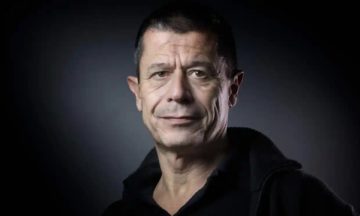 In a sense, writing a book is easy. You just keep putting one interesting sentence after another, then thread them all together along a more or less fine narrative line. Only, it isn’t easy – in fact, it’s famously difficult, a daunting and arduous labour that can frequently leave you in a state of utter nervous exhaustion, reaching for the bottle or the pills. Since his creative breakthrough with
In a sense, writing a book is easy. You just keep putting one interesting sentence after another, then thread them all together along a more or less fine narrative line. Only, it isn’t easy – in fact, it’s famously difficult, a daunting and arduous labour that can frequently leave you in a state of utter nervous exhaustion, reaching for the bottle or the pills. Since his creative breakthrough with 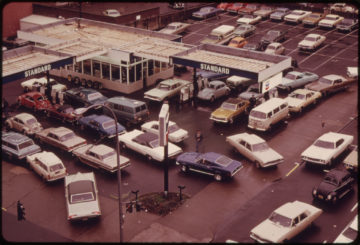 Gregory Brew in Phenomenal World:
Gregory Brew in Phenomenal World: Columbine. Parkland. Pulse. Virginia Tech. Sandy Hook. Las Vegas.
Columbine. Parkland. Pulse. Virginia Tech. Sandy Hook. Las Vegas. Researchers studying human remains from Pompeii have extracted genetic secrets from the bones of a man and a woman who were buried when the Roman city was engulfed in volcanic ash.
Researchers studying human remains from Pompeii have extracted genetic secrets from the bones of a man and a woman who were buried when the Roman city was engulfed in volcanic ash.